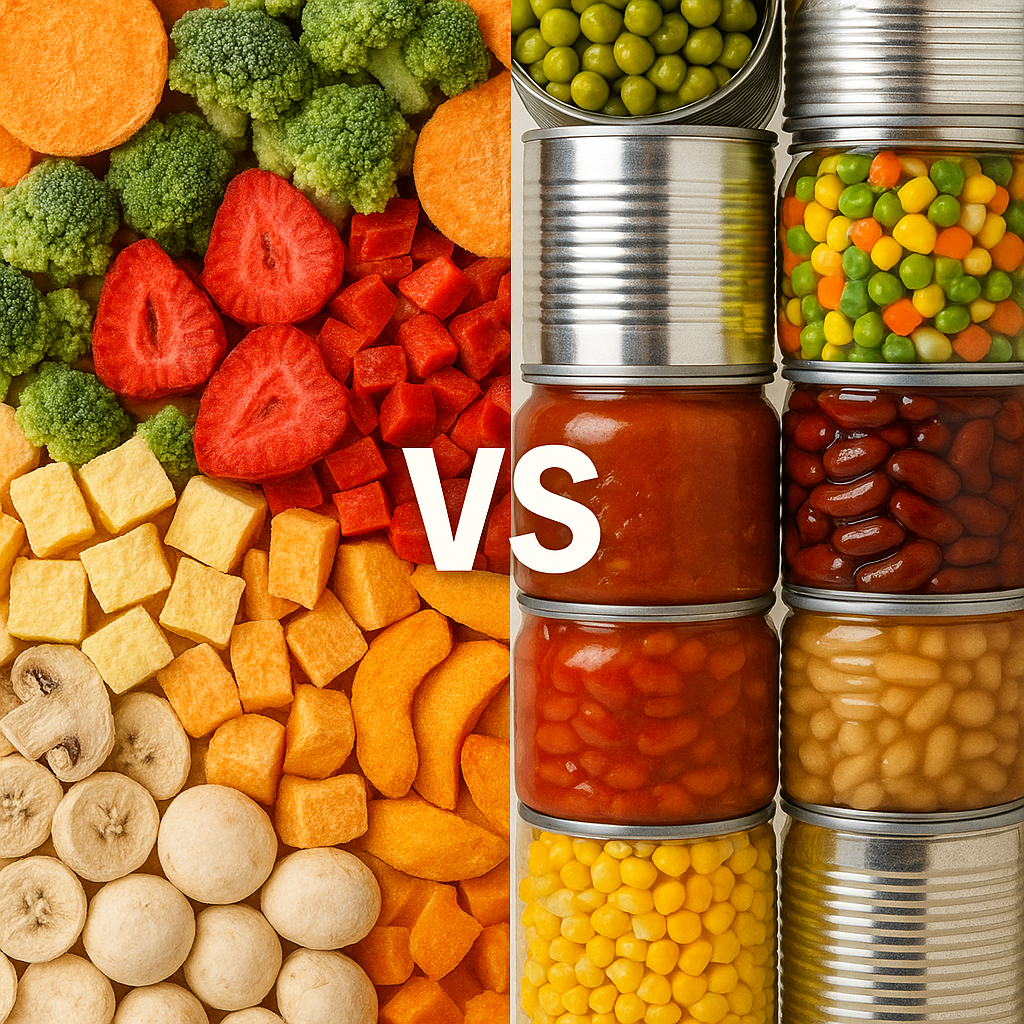Summary:
Freeze drying and canning are both effective for food preservation, but serve different needs. Freeze drying excels in shelf life, nutrition, and food quality, but is more expensive. Canning is affordable and accessible, but comes with shorter shelf life, more nutrient loss, and heavier storage requirements. Both methods can play a valuable role in a well-rounded food storage plan
|
Feature |
Canning |
Freeze Drying |
|
Process |
Food is sealed in jars/cans and heated to kill microorganisms |
Food is frozen, then moisture is removed in a vacuum via sublimation |
|
Shelf Life |
1–5 years (sometimes up to 10 with ideal storage) |
Up to 25 years when properly packaged |
|
Nutritional Retention |
Significant nutrient loss (up to 40–60% for heat-sensitive vitamins) |
Retains up to 97% of original nutrients |
|
Taste & Texture |
Softer texture, flavors often change; some foods become mushy |
Maintains original taste, color, and texture; rehydrates close to fresh |
|
Food Types |
Wide variety: fruits, vegetables, meats, prepared meals |
Almost any food, including dairy, eggs, full meals, and even ice cream |
|
Portability & Storage |
Bulky and heavy due to jars/cans and water content |
Lightweight, compact, easy to transport |
|
Equipment & Cost |
Inexpensive, accessible for home use (canner, jars) |
Expensive, requires specialized freeze dryer |
|
Preparation Time |
Hours to a day (including cooling/sealing) |
20-40 hours per batch, mostly hands-off |
|
Convenience |
Ready to eat from the jar |
Requires rehydration for most foods |
|
Food Safety |
Risk of contamination if not done correctly (e.g., botulism) |
Very low risk if stored properly |
Key Differences
-
Shelf Life: Freeze-dried foods can last up to 25 years, far surpassing canned foods, which typically last 1-5 years.
-
Nutritional Value: Freeze drying preserves up to 97% of nutrients, while canning can result in a loss of 40-60%, especially for heat-sensitive vitamins.
-
Taste & Texture: Freeze-dried foods maintain their original taste, color, and texture and rehydrate to near-fresh quality. Canned foods often have a softer, sometimes mushy texture and altered flavor.
-
Portability: Freeze-dried foods are lightweight and compact, ideal for backpacking and emergency kits, while canned goods are heavy and bulky.
-
Cost & Accessibility: Canning is more affordable and accessible for most home users, requiring only basic equipment. Freeze drying requires a significant investment in specialized equipment.
-
Food Variety: Freeze drying can preserve foods that are difficult or impossible to can safely, such as dairy, eggs, and ice cream.
Which Should You Choose?
Freeze Drying is best if you:
-
Want maximum shelf life (20 - 30+ years)
-
Prioritize nutrition and original food quality
-
Need lightweight, portable food for emergencies or outdoor use
-
Are willing to invest in specialized equipment
Canning is best if you:
-
Prefer a traditional, budget-friendly method
-
Want ready-to-eat preserved foods
-
Are preserving foods for short to medium-term storage
-
Want an accessible method with simple equipment



